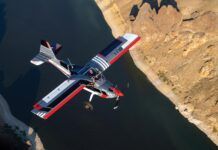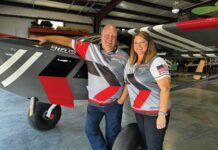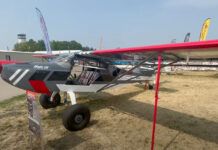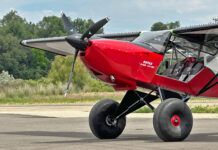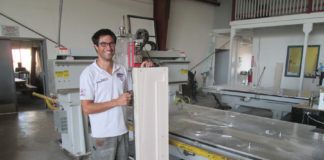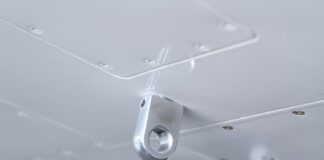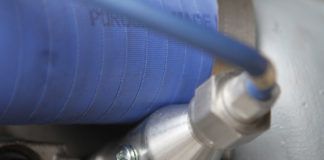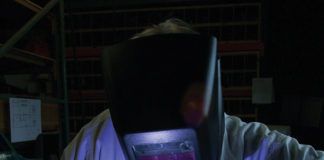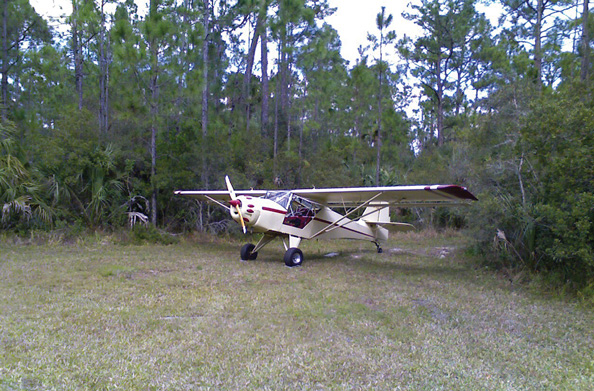
Seventeen years ago, when the big crate arrived in our two-car driveway, in front of our two-car garage, I was overwhelmed by the idea that my husband and I, young marrieds and young parents, were actually going to take on the task of building an airplane. I was right to be overwhelmed.
Even though the airplane we had picked, a Kitfox 4 with speedster-style clipped wings and a two-stroke Rotax 582 engine, was a pretty simple build from one of the most complete kits on the market (at the time), it was a lot for us. But it was worth the effort.
For the 16 years since Little Bird has taken to the skies, we’ve enjoyed having an airplane that we could always afford to fly. Even when fuel cost more than wed ever known it to be, we could justify taking the Kitfox to a barbecue, a fly-in or to visit with friends.
No, it isn’t a great cross-country machine. Even with all of the refinements we’ve made over time, the Kitfox 4 cabin is not known for its spaciousness, and ours is one of the more spartan. The seats are basically hand-cut boat cushions made from a fine, durable canvas (the same canvas that we had the external cover cut from). I’ve taken to adding one extra seat cushion with a little donut cut out of it to eliminate a delicate pressure point and give me a little extra height for seeing over the nose. The luggage area is a canvas sling with a lightweight hard bottom and a plethora of pockets, where we keep the diminutive fire extinguisher, aluminum chocks, fuel strainer, sectional charts, a couple of bungee cords to lock the controls with and a pouch of tools, just in case. I would not put more than 25 pounds of bags back there, even if it could hold 50 pounds. If that sack fell, it would fall right on the pushrod for the elevator, and I don’t want that to happen.
The engine, now a four-cylinder, air-cooled, direct-drive Jabiru 2200, is connected to a 72-inch Sensenich wood prop, and is marvelously efficient. We can fly just as far, and just as long as with the Rotax 582, and with our new Grove aluminum gear modification, we can get there a smidgen faster.
Just Get Away!
The result is that we do tend to use the airplane more. One of my favorite trips this past year was to a back country strip located in the middle of the Great Cypress Swamp in south Florida, which is owned by the Forest Service but actually maintained by a nearby property owner, a retired airline pilot who has used the strip to come and go from his family’s hunting camp. Just 20 minutes of driving off of Alligator Alley, the place is as isolated as you can get in south Florida, with wildlife wandering in and out, completely unafraid. It is also not on a Sectional chart. We found it by inputting the coordinates on Google Earth and zooming in. Then we took that printout and correlated it to the point that matched the coordinates on the Sectional chart.
The Kitfox 4 does not have a panel-mounted GPS, and most of the time we fly with a chart and the Air Guide compass thats riveted onto the glareshield. This time was no different. We flew until we were pretty sure we should be just about on top of the airfield, and then we started looking hard. From 1200 feet MSL, we could just see it-appearing as if God had taken a cutter and stamped a perfect rectangle of groomed sod out of the solid swamp timber of the forested wildlife area.
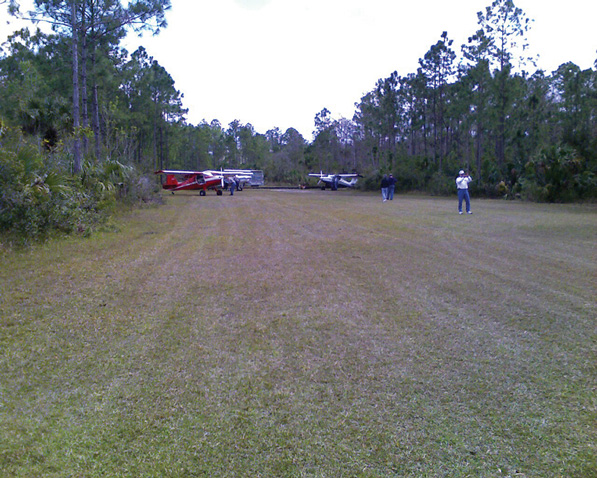
A Thing of Beauty
The strip is perfect. Mowed grass, hard, but with a little give, and about 1300 feet of usable length. It was a drug strip that stretched 3000 feet once, Im told, but the swamp foliage didn’t let that stay long. There’s a V-cut in the trees on the west end that you can just funnel a small aircraft through for landing to the east. If you want to land to the west, you’ll have to come in over a bank of 150- to 200-foot tall cypress and pine, so you’d best have your short-field approach with obstacle technique honed for the occasion.
The trees are high and tight on either side of the 100-foot-wide clearing, so there isn’t much room for wobbling off center. The bad thing is that the trees are so tall, it makes it impossible to see the strip when you are on the downwind leg at the proper altitude for landing. The nice thing is they make a terrific wind screen, and once you’ve descended below them (and compensated with a touch of power if you must for the sudden wind shear) you can land in a nice, calm little rectangle of manicured grass-as long as you do everything right.
I wasn’t flying the day we dropped in for a visit, so it wasn’t my fault that we scattered the one or two friends who were taking pictures when we zoomed up on the go-around from the first attempted landing. We were carrying a bit too much power after the wind-shear dip and, well, it just wasn’t going to work without a ground loop or some other violent maneuver to get us stopped before the log thrown across the end of the runway on the east end. At least thats how it appeared from the right seat. The adrenaline flowed-lets leave it at that.
The second approach was much better, and we landed with room to taxi to a tiedown alcove cleared out of the brush beneath those big pines. We hopped out and apologized for scaring everyone, then settled in a safe corner to watch as a Maule, a couple of Highlanders and an Apollo Kitfox arrived a few minutes apart. These were the other barbecue guests, and there is nothing quite as much fun as getting to score landings while relaxing with a cool bottle of water and the knowledge that you had done it, so they would likely navigate the landing successfully as well.
The late lunch was smoky-flavored wild pig and chicken. Shaded by the swaying pines and cypress, with only our laughter and the sound of the wind in the trees to break the silence, it was magical. We could have been thousands of miles from our home, but really it was just about an hour away.
We left the area with plenty of daylight to make it home, even with a devastating headwind (all headwinds are devastating in the Kitfox) that turned an hour-long trip into an hour and a half trip. No matter. That just gave us a little more time at 1000 feet to admire the sky as the buttery late afternoon light melted to grays, pinks and purples, and the sun settled onto the long Gulf of Mexico horizon as a glowing orange ball. By then we were setting up on final for Runway 9 at our home field, which, at 3400 feet of pavement and plenty of clear-way on both ends, suddenly looked like it was built for the Space Shuttle. The landing? A cinch after that short-field practice.


